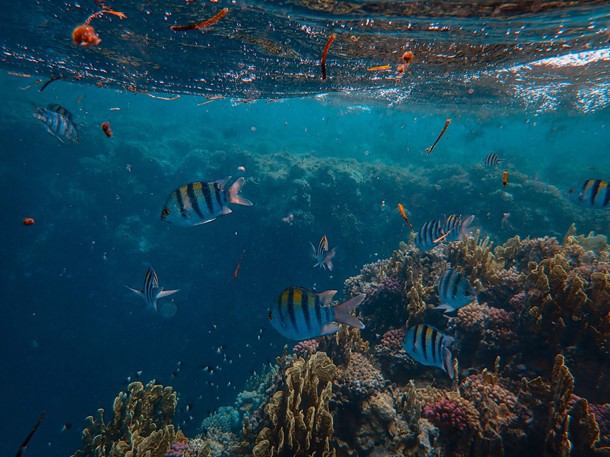Underwater Salvage & Rescue Robotics

Image Source: Pexels
Robotics and the ocean are perhaps an unexpected pairing unless you’ve watched Titanic a hundred times — but one with incredible potential. Completing any task underwater is difficult for humans. Crushing conditions and costs of operation only get worse the deeper you go. But robots have the potential to go where humans cannot, salvage what we cannot, and rescue who we cannot.
These opportunities make underwater robotics a lucrative growth market, one that can make a real difference in people’s lives. From cleaning up shipwrecks and spills to saving human lives, underwater salvage and rescue robotics are the future of ocean expeditions.
These are some of the ways underwater robotics are being used today to clean up the ocean and rescue the drowning.
Cleaning Up Pollutants
Among the many uses for underwater robotics is the cleaning of harmful materials after a shipwreck, spill, or ocean pollutant. Robotics can engage in clean-up efforts in deep and toxic environments much more cheaply and easily than any human, which is why these autonomous tools are being applied to clean-up efforts.
Imagine, for example, a fleet of robots capable of unobtrusively entering an ocean and cleaning up an oil spill the size of the Gulf of Mexico. This is exactly what can be possible with the help of robotics like the Seaswarm created by SA+P’s Senseable City Lab. These robots roll through the ocean, absorbing oil and repelling water. And perhaps the best part is, they operate through solar power, making their use clean and sustainable.
As we work to clear the oceans of harmful plastics and other pollutants, cleaning robots are making waves — literally. These helpful tools are getting better all the time at detecting and collecting oils and plastics to make the ocean a cleaner place once more.
Hunting for Underwater Treasure
Robotics also play a key role in salvaging treasures of the past from underwater wrecks. With the help of underwater equipment like boat-towed metal detectors, magnetometers, lighting, and video devices, robotics makes finding items in the ocean easier than ever before.
The Korea Institute of Ships and Ocean Engineering has developed a 1,400-pound robotic crab for exactly this purpose. The Crabster CR200 reaches depths of up to 656 feet as it carefully scours the seafloor without stirring up clouds of silt the way many remote-operated vehicles (ROVs) do. As a result, operators can get a better look at shipwrecks and even store items in the robot to be returned to the surface.
Tech like this can help us salvage treasures and artifacts that would otherwise remain on the ocean floor. This helps to not only preserve elements of human history but to make the ocean cleaner and safer for its many residents.
Finding Submerged Vehicles
Vehicles like ships and airplanes go down in the ocean all the time. Malaysia Airlines flight MH370 was one tragic proof of this reality that demonstrates the need for better tools when it comes to finding lost craft underwater. Luckily, robots are here to help.
Innovators with the Subcultron project are developing networks of connected robotic devices that can scan the seabed and communicate with one another regarding finds. This robotic swarm will be able to crawl over large sections of the ocean floor, pinging off one another and illuminating the contents of the ocean.
As a result, we will be better able to pinpoint the location of downed or damaged craft and gather invaluable data for vehicle maintenance and protection. Data scientists can collect data from vehicles — cars to planes and everything in between — while business analysts take that data and make informed decisions about what gets salvaged and how. The more data collected, the more clearly defined the decisions about how to properly dispose of salvaged materials, which keeps the oceans cleaner.
Saving Lives
Most importantly, underwater salvage and rescue robotics are helping people in need. The ocean is a dangerous place. An accident at sea means a risk of drowning or hypothermia in colder waters, conditions that make human rescues difficult.
But robots like Hydronalix’s Emergency Integrated Lifesaving Lanyard (EMILY) are already out there saving lives. EMILY is a remote-controlled robotic device that acts as a life-raft or floatation buoy that can rush out at 22 mph even while carrying five people. In its first 10 days of use, EMILY saved 240 refugees from drowning in the Mediterranean Sea.
With robots getting better all the time at navigating the ocean to find people and objects, life-saving inventions like EMILY will become increasingly common. As a result, our waters can become cleaner and safer.
Securing the Future of Sustainable Exploration
But securing the future of sustainable ocean exploration, salvage, and rescues means continually innovating with new and improved robotics. All these devices detailed here have the potential to improve through greater data collection and experimentation. Engaging in this work will take the expertise of industry professionals and dedicated amateurs alike.
Working underwater can be just as if not even more difficult than working in space. So, naturally, robots have an edge. With the use of salvage and rescue robots, we can better address the challenges of finding and rescuing anything from the vastness of the sea.
Thanks for helping to keep our community civil!
This post is an advertisement, or vandalism. It is not useful or relevant to the current topic.
You flagged this as spam. Undo flag.Flag Post


